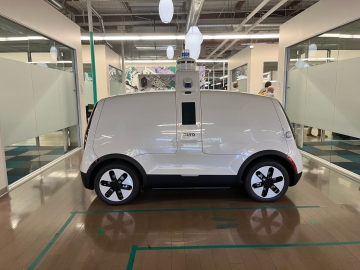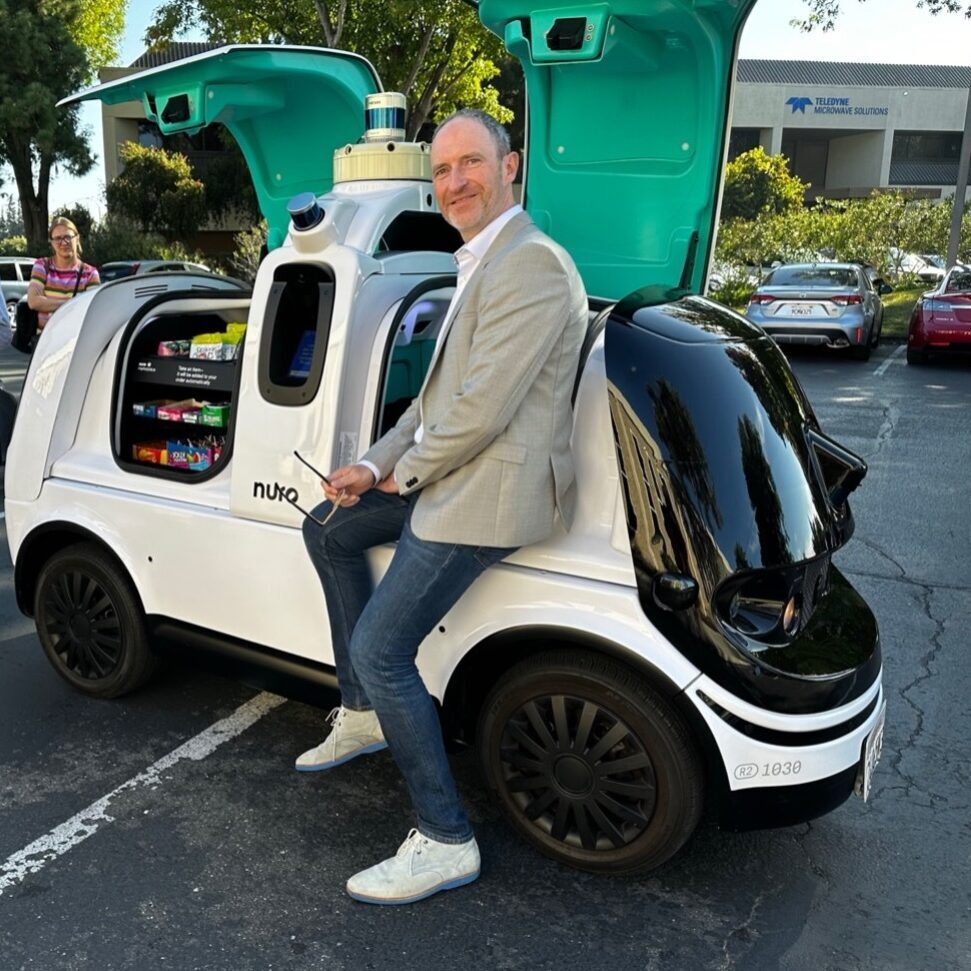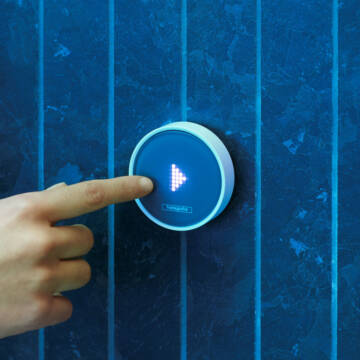First autonomous, zero-emission delivery robots to be deployed on a large scale in America

Soon – possibly sooner than we think - our online orders will be delivered to our homes by a self-driving or even flying and, moreover, non-polluting robot. In fact, two American companies using such robots have already received the licences required to roll out autonomous deliveries in the coming months in Silicon Valley. “So it’s just a matter of time before we see them flying and driving around here as well”, anticipates Joachim De Vos.
Soon – possibly sooner than we think - our online orders will be delivered to our homes by a self-driving or even flying and, moreover, non-polluting robot. In fact, two American companies using such robots have already received the licences required to roll out autonomous deliveries in the coming months in Silicon Valley. “So it’s just a matter of time before we see them flying and driving around here as well”, anticipates Joachim De Vos.
The thousands of (often polluting) delivery vans that overrun our roads every day to deliver online orders could soon be a thing of the past. Because, for the first time ever, two companies in America have been granted all the necessary approvals to use autonomous electric, self-driving buggies and drones for deliveries. Over the coming months, in the suburbs of Silicon Valley, the zero-emission autonomous buggies from Nuro will be employed on a large scale to drive around with chilled and hot meals, and the drones from Wing will drop off parcels in the gardens.
At the previous Living Tomorrow Innovation Mission, organised in collaboration with BDO, 25 Belgian and international business leaders and top managers from government bodies had the chance to discover this activity in practice. The innovation of autonomous delivery has gained great momentum in recent times. During the Covid crisis, attention quickly turned to contactless deliveries and everyone was obliged to order online and receive their deliveries at home. Another influencing factor is the increasing minimum wage for delivery drivers. In the US, the minimum hourly wage has risen from $10 to $17. Because of this, many restaurants and shops are unable to maintain a profit on their home deliveries. They must therefore turn to robot drivers to take the task over from people.The American companies Nuro.AI and Wing are responding cleverly to this situation.
Nuro.AI was founded by engineers from Google’s self-driving project, Waymo. After years of developing and testing deliveries of medicines for CVS Pharmacy, pizzas for Dominos and groceries for 7-Eleven, the self-driving delivery van is now in full production. Nuro has announced a 10-year partnership for autonomous food delivery in California and Texas. The electric zero-emission and zero-driver vehicle can deliver food at ambient, chilled and hot temperatures. After placing an order on your smartphone, the Nuro is loaded in the fulfilment centre and drives directly to you. Upon arrival, the cart sends you a message and you can open the hatch by entering your digital code. You take out your groceries and then Nuro immediately sets off to serve the next customer. It’s an amazing sight. The Nuro is also fast. The cart does speeds of up to 60 km/hour and has a range of several hundred kilometres. In fact, it’s a small ‘Tesla’ with self-driving functions (level 4), in which control is only taken over remotely in the event of a problem. It’s a fantastic solution for the suburbs. For the time being, in city centres, it’s still more profitable to do home deliveries in the traditional way, due to the density and complexity.

Home deliveries by air are no distant dream either, according to Wing, an Alphabet (GoogleX) initiative that has been testing its ‘Unmanned Autonomous Vehicles’ – say drones - since 2012. Meanwhile, the company has already accomplished more than 250,000 deliveries in the US, Australia and Finland. The company has over 20 electric drones. If a consumer orders a parcel (of up to 2 kg), it is attached to the drone with a hook. At speeds of 100 km/hour the drone then races to its destination, where the parcel is lowered with a cable and released in your garden. You receive a message once the delivery is made.
Both Wing and Nuro now have the required licences to become operational on a wide scale in the coming months. The residents were delighted to hear about the activity. The local authorities were too, because the transport is safe, and causes little noise and traffic congestion. For example, the Wing drone has 12 rotors, which ensure that the device can land safely, even if several rotors were to fail. The Nuro has different radar and camera systems and is literally a gentleman on the road. Plus, improvements are being made all the time: thanks to AI services, both systems learn fast to boost the efficiency, safety and economy of the deliveries. It is now up to Europe to speed up with more flexible regulations to facilitate such ambitious pilot projects. I expect that we will also become acquainted with this in the near future.
Latest insights & stories

A Global Movement: The World Unites in a Pink Pledge for Clean and Sustainable Water
5,000 participants. 32 countries. €30,000 funds raised. And that's just the beginning.
Picture this: One step that sends ripples across the globe, transforming lives and creating waves of change. You might wonder, how can such a simple action for most of us have such a profound impact?

Sustainability and circularity in construction
Join us in transforming the future of construction, creating buildings that not only stand the test of time but also contribute to a healthier planet!

RainTunes: Shower scenarios for the soul
Light, hearing, smell, and touch: Together with experts, we have developed sensuous scenarios that turn showering into an individual experience. Whether you want to prepare for the day ahead or relax after working out. Whether you want to refresh after a day’s work or unwind at the end of the evening: RainTunes surprises with multisensory experiences.*
*Currently available only in Germany and Austria.